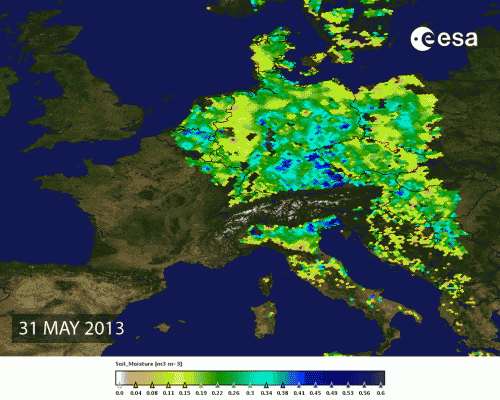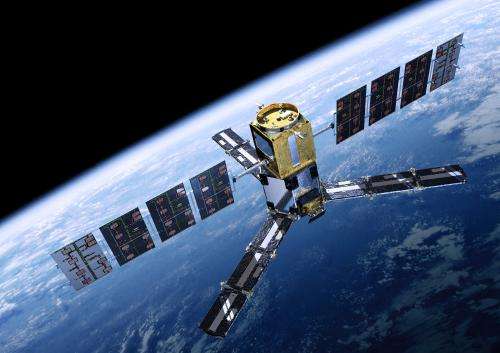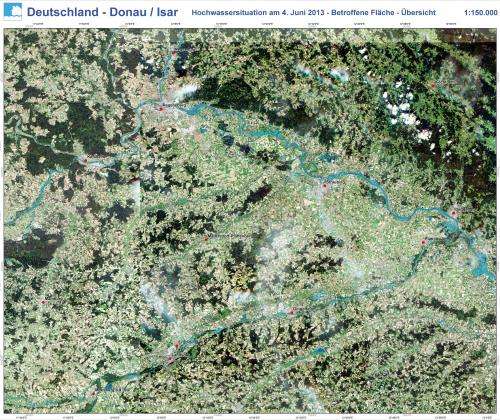Soil moisture from SMOS.
As parts of central Europe are battling with the most extensive floods in centuries, forecasters are hoping that ESA's SMOS satellite will help to improve the accuracy of flood prediction in the future.
As its name suggests, the Soil Moisture and Ocean Salinity (SMOS) mission monitors the amount of water held in the surface layers of the soil and the concentration of salt in the top layer of seawater.
This information is helping scientists understand more about how water is cycled between the oceans, atmosphere and land – Earth's water cycle. It is also helping to improve weather forecasts.
The massive flooding that central Europe is currently suffering was brought about by a wet spring and sudden heavy rains.
SMOS carries a novel microwave sensor to capture images of 'brightness temperature' to derive information on soil moisture.
Prior to the torrential rains, SMOS showed that soils in Germany were showing record levels of moisture – in fact, the highest ever observed.
The animation above shows the wet soils in blues and the dryer soils in yellows.
SMOS in orbit.
ESA's SMOS mission scientist, Matthias Drusch, explains, "Data from SMOS can be used to monitor the saturation of the soil.
"At the end of May we see that the soil was almost fully saturated, with record values for moisture. More rain meant that it immediately ran off as the surplus water could not soak into the soil, and this resulted in these terrible floods.
Flood mapping through the International Charter.
"Numerical Weather Predication centres are currently assessing the possibility of using SMOS data to improve weather and flood forecasts, so hopefully we will be better placed to predict these events more accurately in the future. "
Satellite missions such as Germany's TerraSAR-X and RapidEye are providing imagery to aid the relief effort through the International Charter Space and Major Disasters.
More information: Climate Change Initiative: soil moisture
Provided by European Space Agency

























